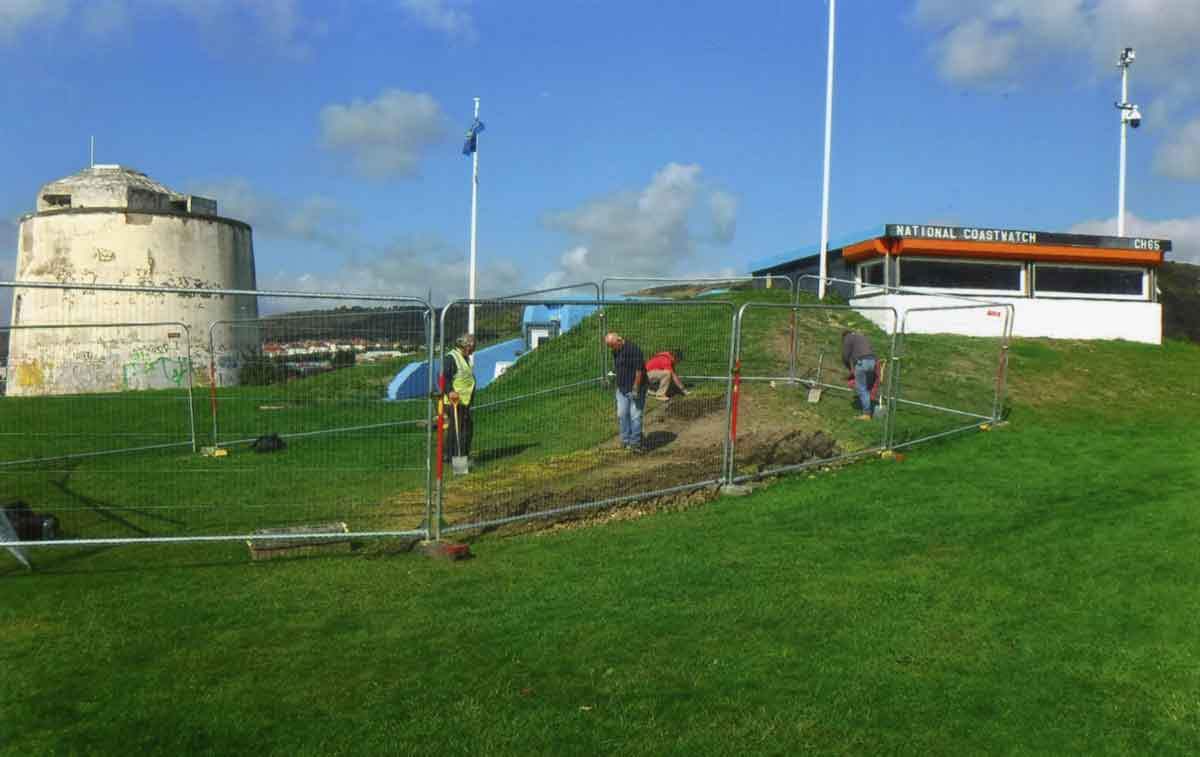The site of the mound trench on top of Copt Point Photo: Ray Duff
Words and pictures by Ray Duff – During the recent re-opening of the Roman Villa site on East Cliff, some further trenches were also placed on parts of Copt Point including on the slope up to Martello Tower no.3, and into the unusual mound within which the Coastwatch station is situated.
The slot trenches on the slopes produced very little in the way of finds, other than some worked flints which are difficult to date, and some modern 20thC articles.
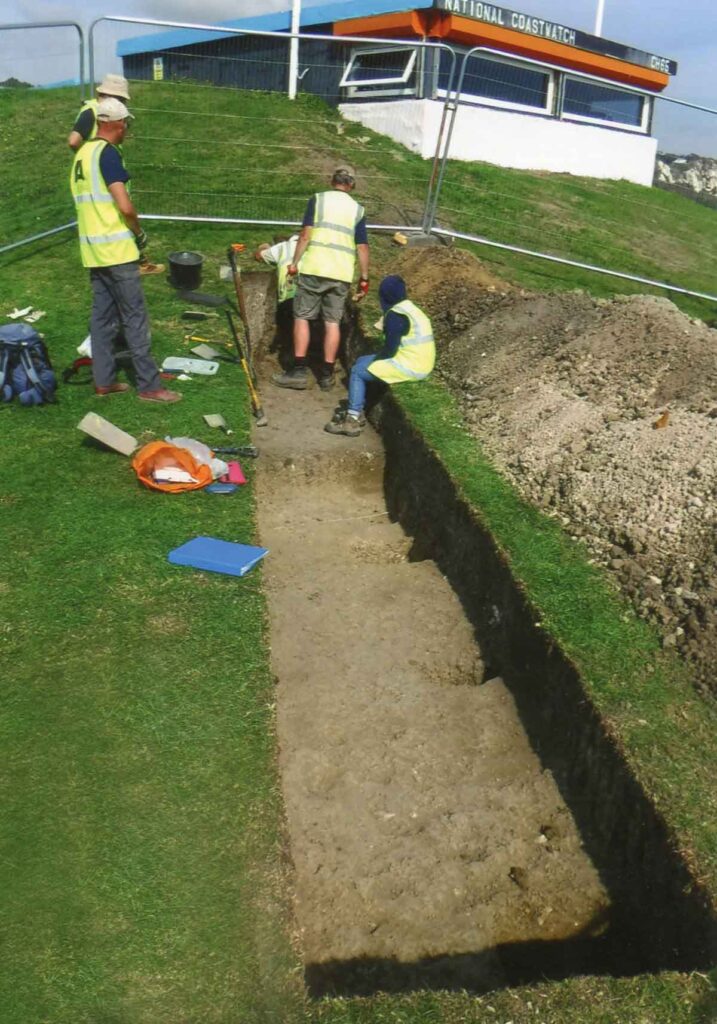
Legends
The mound in question, where the Coastwatch station which took over a former WW2 lookout built into it now sits, is known to have existed for a long time and there are some legends about it being one of the reputed burial places for the early Anglo-Saxon warrior named ‘Horsa’.
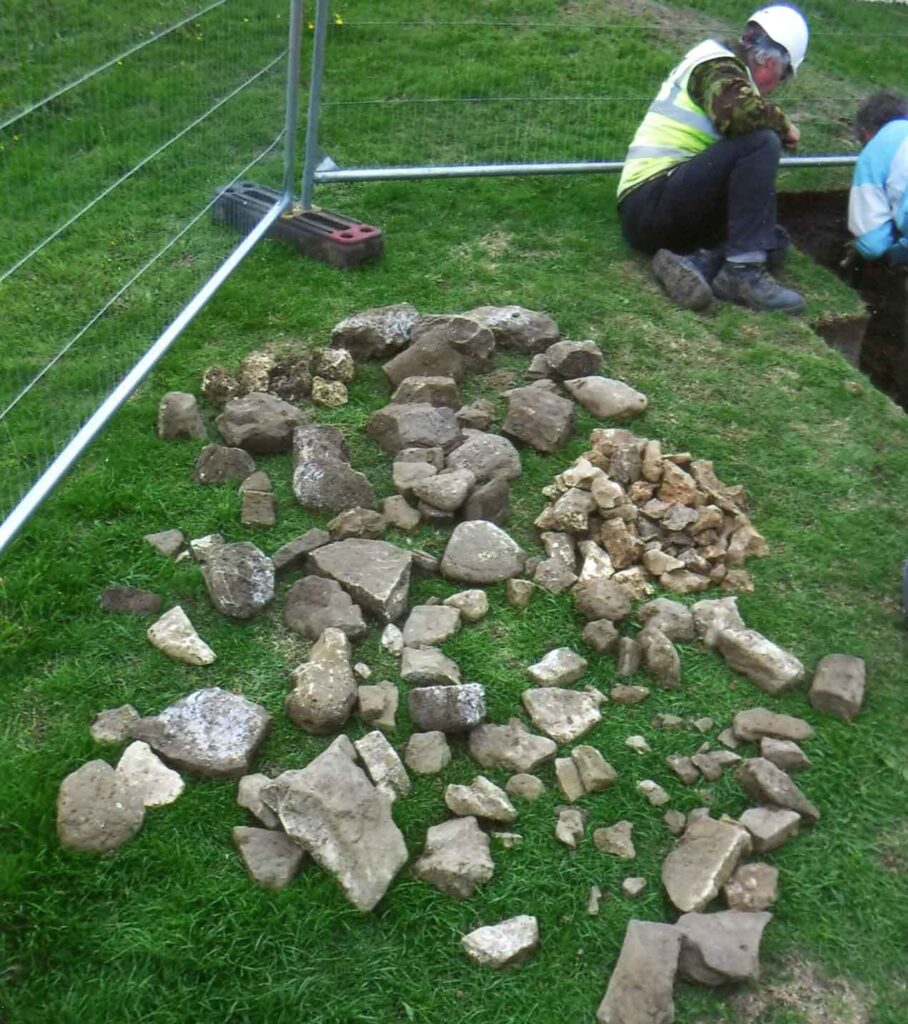
That said, he and his supposed brother ‘Hengist’ are these days considered to be mere founding myths rather than actual people.
The nearby area has had the term ‘Hasborough’, thought to be a corruption of ‘Horsa’s Barrow’, attached to it, with various spellings, at least the last 2-300 years or more. So if the mound has been there during that time and long before it may be the origin of the legend. Other suggestions have included a Bronze Age barrow or a Roman cairn.
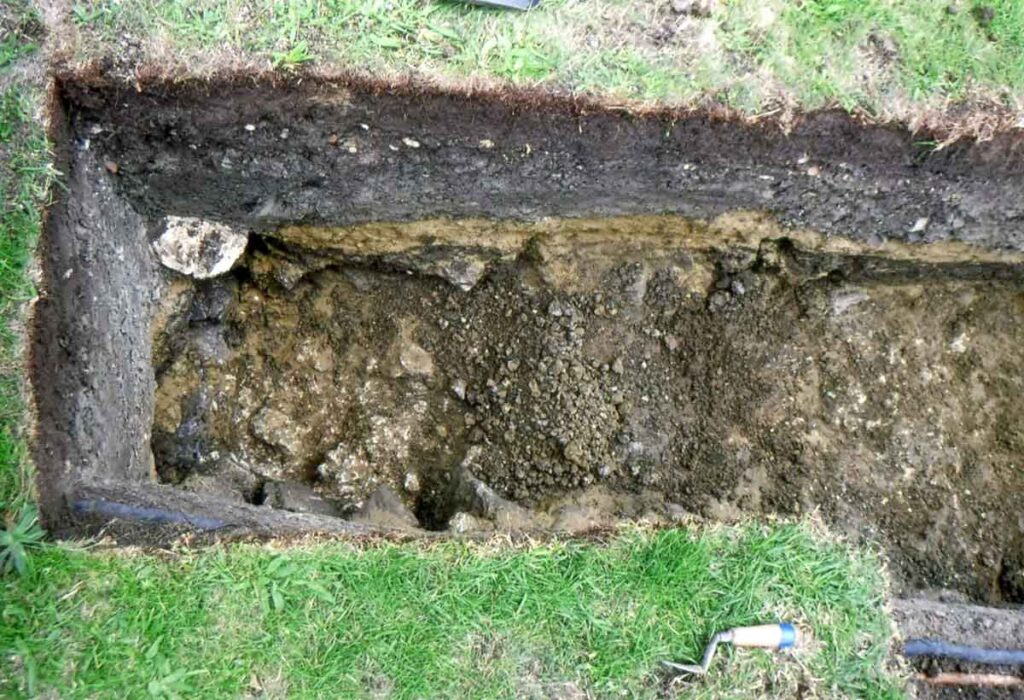
However, a trench placed from the outside of the mound and running up into a section of it, has found no datable evidence of when it was constructed.
It is certainly man-made as there are clear signs of layering including one made of various stone blocks of greensand, flint and tufa. The last almost certainly came from Dover. A few blocks appeared to have some signs of mortaring on them, but this is unlikely to help date it.
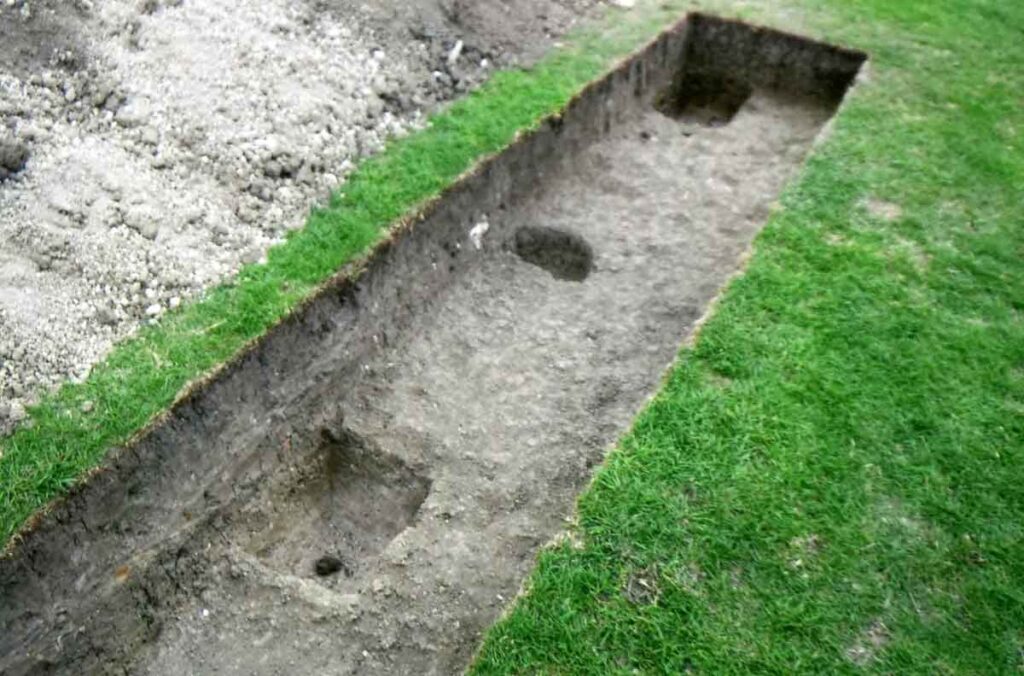
Had some pottery or animal bone been found, especially under the stone block layer, it would have been able to give it an approximate date.
The trench, and the stones, was carefully restored after the excavations. However, the lack of evidence from just one trench means that it may have to be re-examined at a later date on other parts of the mound to try to obtain a date so revealing why it was put there and by whom.
Canterbury Archaeology Trust:
https://www.facebook.com/CanterburyArchaeologicalTrust/
Folkestone Research and Archaeology Group:
https://www.facebook.com/FolkestoneResearchAndArchaeologyGroup/
